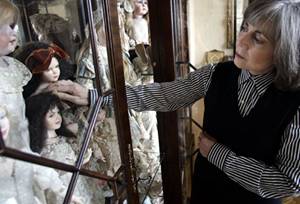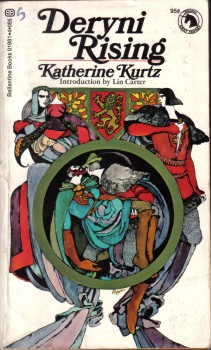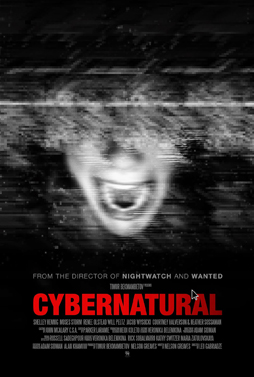My Fantasia Festival Wrap-up
 As I write this, I’m preparing for a vacation in the country. It’s an odd thing, in that the past three weeks have been a kind of vacation in themselves, as thanks to John O’Neill here at Black Gate and to the Fantasia staff, I was able to cover this year’s edition of the Fantasia International Film Festival. Still, watching (by my count) thirty-nine movies and writing about all of them was quite a project. Fun, though. I thought I’d take a quick post to wrap up my coverage by talking about what I’ve learned from the experience.
As I write this, I’m preparing for a vacation in the country. It’s an odd thing, in that the past three weeks have been a kind of vacation in themselves, as thanks to John O’Neill here at Black Gate and to the Fantasia staff, I was able to cover this year’s edition of the Fantasia International Film Festival. Still, watching (by my count) thirty-nine movies and writing about all of them was quite a project. Fun, though. I thought I’d take a quick post to wrap up my coverage by talking about what I’ve learned from the experience.
First, an observation: the other day, Montreal’s venerable Festival des Films du Monde put up a press release on their site which, so far as I can see, states that they’ll be showing 160 features and about 190 shorts in this year’s edition of their festival. The Fantasia festival that I’ve been covering also had 160 features this year, along with 300 shorts. Fantasia, established 1996, is at least for this year larger than the Festival des Films du Monde, making it the largest film festival in Montreal. I have no idea how the audience figures break down between the two festivals, but I know people at Fantasia were pleased to announce that they’d had an attendance of over 128,000 by Tuesday. All of which is just to say that this festival is vigorous and growing, a testament to the strength of genre filmmaking around the world.
And another observation: about a dozen years ago, I taught a college-level film course. I already knew a certain amount about film, but I educated myself a fair bit more, learning about film history and technique. Now, like I said, that was a dozen years ago. And I haven’t made an especial effort to keep up. But here’s the thing about film: it’s a young medium and changes fast. I spend a lot of my time, here and elsewhere, engaged with literature — which, in the West, has over 3000 years behind it. Film has about 120. Which is to say that when I say I studied film a dozen years ago, that’s a tenth of the total time that the medium’s been around. And I suspect there’s a disproportion in the amount of activity in the medium during that dozen years: digital cameras have made filmmaking easier, and more countries have developed film industries of their own. In a way, these past weeks at Fantasia have re-educated me about film, bringing me face-to-face with the reality of where cinema is now.
 I closed out this year’s Fantasia film festival with a movie on Wednesday and another on Thursday. Together they seemed to say something about the festival, in that they had virtually nothing in common. They’re from different countries, they’re different genres of film, they have wildly different budgets — and yet somehow they both seem to belong at Fantasia. Unsurprisingly, one played the big Hall Theater, while the other screened at the small De Sève.
I closed out this year’s Fantasia film festival with a movie on Wednesday and another on Thursday. Together they seemed to say something about the festival, in that they had virtually nothing in common. They’re from different countries, they’re different genres of film, they have wildly different budgets — and yet somehow they both seem to belong at Fantasia. Unsurprisingly, one played the big Hall Theater, while the other screened at the small De Sève. Last Tuesday saw the presentation of the official closing film of the 2014 Fantasia International Film Festival. Film festivals being what they are, there’d actually be another two days of films after that. In any event, I’d manage to see the closer, after catching two other movies earlier in the day.
Last Tuesday saw the presentation of the official closing film of the 2014 Fantasia International Film Festival. Film festivals being what they are, there’d actually be another two days of films after that. In any event, I’d manage to see the closer, after catching two other movies earlier in the day.
 As I said in my last post, I went out of town for the first weekend of August, and thus missed a couple days’ worth of movies playing at the Fantasia film festival. I was able to catch up with some on Monday, though. Fantasia maintains a screening room, with workstations where journalists, industry people, and other accredited folks can watch movies on computer. It’s not the optimal way to experience a film — they’ve usually been burned onto a DVD or accessed through a private Vimeo account — but it’s serviceable if you can’t catch the movie any other way. The screening room usually loses rights to the movies shortly after they play at the festival, but when I went by on Monday, there were still quite a few available.
As I said in my last post, I went out of town for the first weekend of August, and thus missed a couple days’ worth of movies playing at the Fantasia film festival. I was able to catch up with some on Monday, though. Fantasia maintains a screening room, with workstations where journalists, industry people, and other accredited folks can watch movies on computer. It’s not the optimal way to experience a film — they’ve usually been burned onto a DVD or accessed through a private Vimeo account — but it’s serviceable if you can’t catch the movie any other way. The screening room usually loses rights to the movies shortly after they play at the festival, but when I went by on Monday, there were still quite a few available.


 A week ago, on Thursday, July 31, I saw yet another movie at the Fantasia Festival. Then I left town for the weekend to attend to some business of my own. I got back in on Sunday, and went to see another movie Monday evening. By that time, I’d also been able to catch up on a couple of films that I’d missed over the weekend — but I’ll be talking about them later. For the moment, I’ll discuss the films I saw in the Fantasia theatres.
A week ago, on Thursday, July 31, I saw yet another movie at the Fantasia Festival. Then I left town for the weekend to attend to some business of my own. I got back in on Sunday, and went to see another movie Monday evening. By that time, I’d also been able to catch up on a couple of films that I’d missed over the weekend — but I’ll be talking about them later. For the moment, I’ll discuss the films I saw in the Fantasia theatres.
 I didn’t see any films at Fantasia on Monday, July 28, and then on the 29th I saw two. One was Guardians of the Galaxy, which
I didn’t see any films at Fantasia on Monday, July 28, and then on the 29th I saw two. One was Guardians of the Galaxy, which